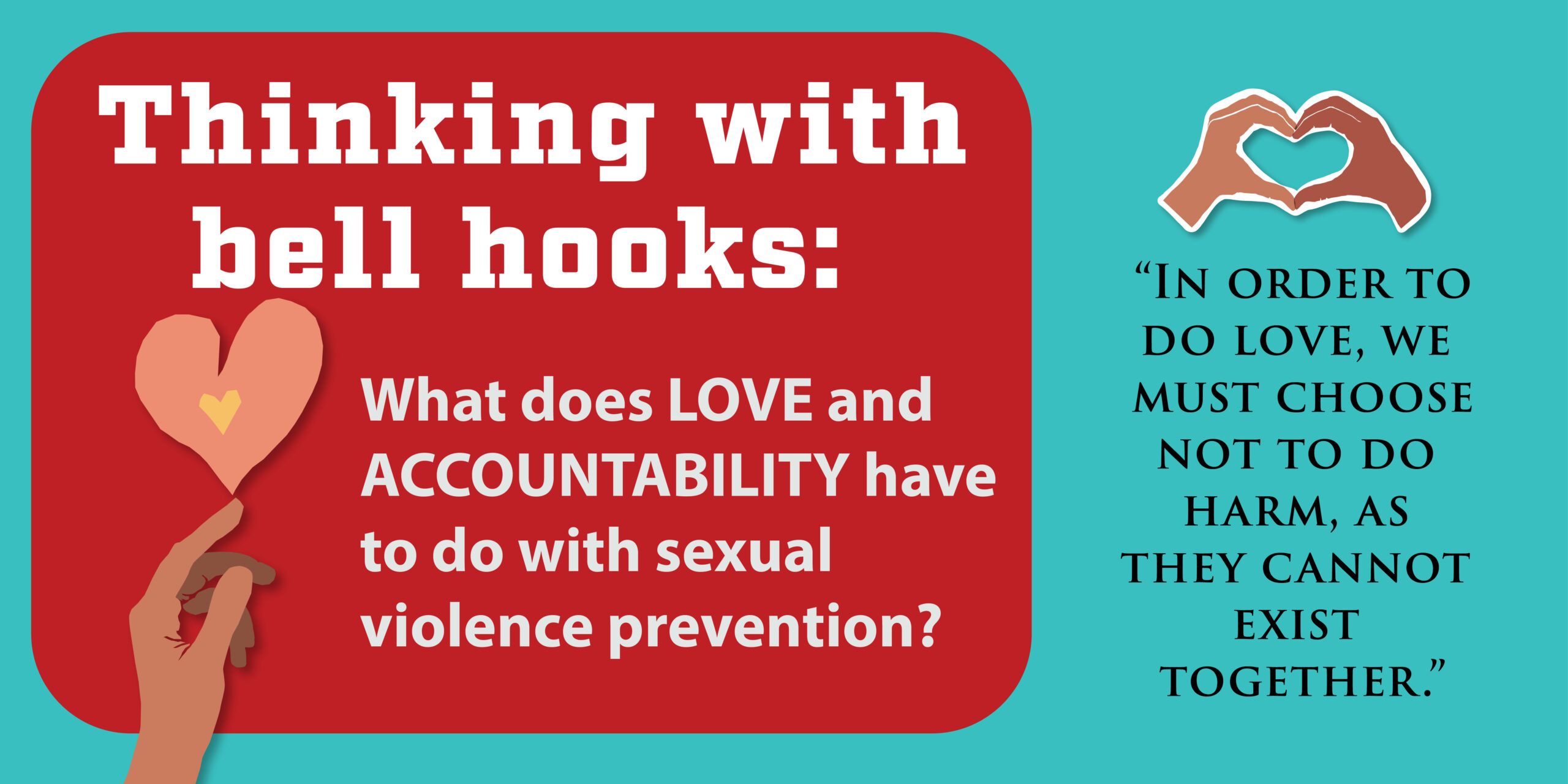
By Terry Kim, Student Staff Member
When you are asked, “how is your love life?” what would your response be?
One might say, “pff, non-existent,” another might share, “urgh, boring – the dating pool is contaminated,” some others might share, “Been interesting, I’ve been on a bunch of dates,” and the other might say, “It’s been chaotic, my partner and I had a fight again.”
Have you thought about your love life only in terms of romantic relationships or intimate partnerships? Or have you been able to move beyond the limited definition of love and come up with different responses that involve your friends, family, yourself, animals, plants, or even a cartoon character?
Either way, it is cool that you recognize love in your life, because love can be found anywhere. But then, what is love? And what does it mean to love and be loved?
bell hooks, the author of All About Love and The Will to Change, provides a clear definition of love, that is, “the will to nurture one’s own and another’s spiritual growth, through respect, responsibility, compassion, trust and truth-telling.” She challenges the notion of love as a passive state of feeling or attraction. Love is a participatory emotion, a verb that invites action rather than a noun that remains as a feeling.
This re-definition is important because:
It recognizes our agency to make a choice and the input we have in our decision.
We do not just passively ‘fall in love’ but we make a choice to love a person or people. By understanding love as an action, we also learn that we accept responsibility for our choices.
For example, let’s say your friend confronted you for hurting their feelings. This is your friend taking responsibility for the choice of keeping the friendship with you and seeking repair. You can then take responsibility for your behaviors or remarks, and ask about their level of comfort so that you can respect their boundaries and avoid repeating disrespectful behaviors next time.
It helps us navigate the relationships we are in and better understand what counts as harm.
We are attracted to what we are accustomed to getting. If we have experienced care and affection mingled with abuse or neglect in childhood, we might have developed a confused or distorted understanding of love. hooks, however, clearly states that abuse and neglect cannot coexist with love, as they negate love. This clarification is helpful, because it allows us to set boundaries of what we are willing to tolerate, and to recognize when we are causing harm to someone we love.
In loving friendships, we take accountability for repairing the harm we have caused in our friend, because love offers the very strength to take accountability. We listen to each other, we care to see different realities in each other’s shoes, and we keep trying to understand each other with patience. With love in action, we can cope with differences and conflicts while staying connected with one another.
hooks explains the reason why we need to collectively work to move our culture in the direction of love:
Because healing cannot happen in isolation.
hooks said the key to healing is connection, and our ability to love ourselves and others will depend on the presence of a loving environment. Everyone is capable of harm as much as good, and everyone should be given an option to choose to do good over harm. However, if we believe that bad people cause harm and good people are victims of harm, we are foreclosing any possibility of change and growth from ourselves and others. What we need now is to learn to take accountability for our actions and to end the harmful actions we see in ourselves and others.
Because we are not only the consumers but also the creators of the culture.
We are affected by the content we consume. For example, due to the mass media glamorizing violence, we tend to think that aggression or violence is the preferred, if not, only viable option when we try to resolve conflict or disagreement. However, we can choose to be non-violent. In fact, most things in real life do not need violence in order to be resolved.
In order to create and maintain mutually supportive and respectful relationships, we should start with ourselves first, to be a healthy and responsible person to our friends and partners. Once we learn how to responsibly love ourselves and others, we will be able to collectively foster an environment that encourages connection and belonging.
hooks said love is an active force that leads us into communion with the world. The choice to love is essentially a choice to connect, and we can see that it was love all along that has been sustaining our lives. Once you learn that you can see yourself in the other, you will not turn on the others as if they never mattered, as if you never mattered.
If we could create an environment where everyone understands that we make a choice to love, then we will also be able to learn how to take responsibility for our choices and be accountable for our actions. In order to do love, we must choose not to do harm, as they cannot exist together.
“The gift of love is that it offers the experience of knowing we always belong.” – bell hooks
